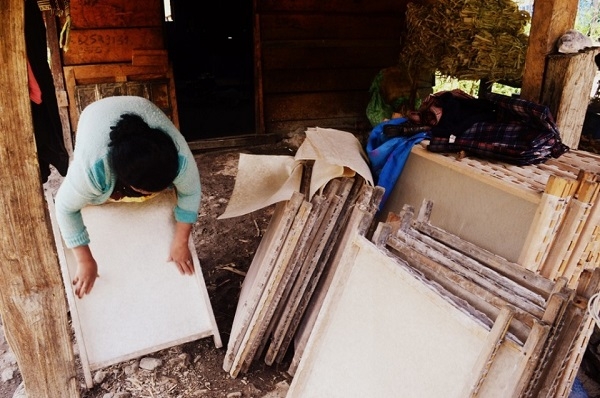Khadi Commission establishes Monpa Handmade Paper Making Unit
Total Views |
New Delhi, Dec 29: Khadi and Village Industries Commission (KVIC) has recently established the Monpa handmade paper making unit. The Monpa handmade paper is a thousand-year-old heritage and was revived with the new unit.
The unit has been established to increase the commercial productivity of paper produced based on the Monpa technique. The unit will create local employment in Arunachal Pradesh. Initially the paper unit will engage nine artisans to produce five hundred to six hundred handmade papers per day. These artisans will earn Rs 400 per day. The unit is to initially begin with twelve women and twelve men from the local villages trained in making Monpa handmade paper.

Earlier an attempt was made in 1994 to revive the Monpa handmade paper industry. However, the attempts failed due to geographical challenges in the mountainous task of fetching the bark of the tree. However, this time, KVIC had deployed a team of scientists from Kumarappa National Handmade Paper Institute, Jaipur to address the challenges.
The team had put in six months of efforts to establish the unit for commercial production. Apart from paper making, Tawang of Arunachal Pradesh is also known for local crafts such as handmade furniture, handmade pottery, which are also becoming extinct. However, KVIC is to focus on these two handmade crafts of Arunachal Pradesh soon.
The art of Monpa handmade paper originated in China around thousand years ago. The fine-textured handmade paper made using the technique is called Mon Shugu. The paper has historic and religious significance and is integral in the culture of local tribes.
The Monpa handmade paper is made from a local tree called Shugu Sheng. The tree has medicinal values as well. Therefore, the availability of raw materials in making the paper is not a problem. Earlier the Monpa handmade paper was sold to other countries such as Japan, Tibet, Bhutan and Thailand for two reasons; firstly, the Monpa handmade paper industry was large and secondly, these countries did not have paper making industries then.

